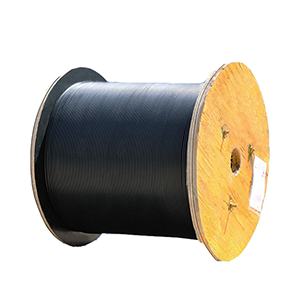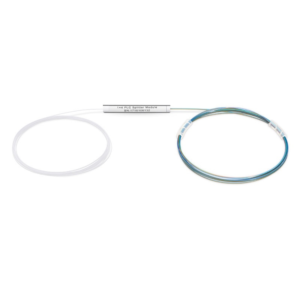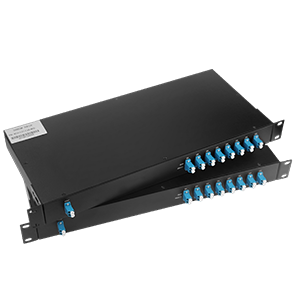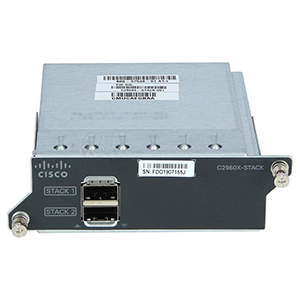Hi, welcome to read the introduction about QSFP56-DD (Quad Small Form-factor Pluggable 56 Double Density) optical module. In this article, I will introduce you to the basic concepts and working principles of the QSFP56-DD optical module, as well as its advantages as a solution for high-speed data transmission needs.
We will also explore the application of QSFP56-DD optical modules in data center networks and 5G communications, as well as the high-speed transmission capabilities and double-density design advantages it provides. I also cover information on technical standards, compatibility, interface types, deployment configurations, and future trends. Let’s dive into the knowledge and advantages of the QSFP56-DD optical module.
Introduction to QSFP56-DD optical module
- Definition and basic principles: The QSFP56-DD optical module is a high-speed optical communication module that adopts Quad Small Form-factor Pluggable (QSFP) packaging and supports 56G transmission rate. The QSFP56-DD optical module has a compact structure and a high-density port configuration, which can provide high-bandwidth data transmission.
- Working principle: The QSFP56-DD optical module transmits optical signals through optical fibers, uses a photoelectric converter to convert electrical signals into optical signals, and then transmits the optical signals to the receiving end through optical fibers. At the receiving end, the optical module again uses a photoelectric converter to convert optical signals into electrical signals to achieve data transmission and reception.
Application fields of QSFP56-DD optical module
Data center network:
QSFP56-DD optical modules are widely used in data center networks, mainly in the following aspects:- High-density cabling: Data centers need to handle large amounts of data traffic and network traffic, so high-density port configurations are required to support large-scale connections. The QSFP56-DD optical module provides a high-density port layout, which can meet the data center’s high-bandwidth and high-density data transmission requirements.
- High bandwidth requirements: With the rise of applications such as cloud computing, big data processing, and artificial intelligence, data centers have increasingly urgent needs for high bandwidth. The QSFP56-DD optical module supports 56G transmission rate, provides greater bandwidth, and can meet the data center’s demand for high-speed data transmission.
- Short-distance connection: In data centers, the connection between servers is usually short-distance, and the QSFP56-DD optical module supports multi-mode transmission, is suitable for short-distance connection requirements, and provides a high-bandwidth solution.
5G communication:
The QSFP56-DD optical module also has application potential in the field of 5G communications, mainly reflected in the following aspects:- High-speed transmission: 5G communication has higher requirements for transmission rate to support large-capacity and high-speed data transmission. The 56G transmission rate of the QSFP56-DD optical module can meet the high-speed data transmission requirements of 5G networks and provides a reliable transmission channel.
- Low-latency connection: 5G communication also has strict requirements for low-latency transmission to support real-time applications and low-latency services. The QSFP56-DD optical module has low transmission delay, which can meet the low-latency transmission requirements of 5G communication and supports real-time data transmission and fast response.
- Network infrastructure: 5G communications require the establishment of complex network infrastructure, including transmission equipment, optical fiber networks and network nodes. As a high-speed optical communication solution, the QSFP56-DD optical module can be used to build the transmission part of the 5G network and provide reliable high-bandwidth connections.
It should be noted that the specific application situation may be affected by factors such as technological development, market demand, and network size. However, due to its high density, high bandwidth and compatibility, the QSFP56-DD optical module has broad application prospects in the fields of data center networks and 5G communications.
Features and advantages of QSFP56-DD optical module
High-speed transmission capability:
The QSFP56-DD optical module provides high-speed data transmission capabilities. Its main features and advantages include:- 56G transmission rate: QSFP56-DD optical module supports a transmission rate of 56Gbps. Compared with traditional 10Gbps and 25Gbps optical modules, the transmission rate is greatly improved and can meet the needs of large-scale data centers and communication networks for high-speed data transmission.
- High bandwidth: High-speed transmission rates mean greater bandwidth capabilities. The QSFP56-DD optical module provides wider communication bandwidth, allowing more data to be transmitted at the same time, supporting high-density data flow and large-capacity data transmission.
Dual density design:
The QSFP56-DD optical module adopts a double-density design, which is its advantage in high-bandwidth connections and high port density:- High port density: The QSFP56-DD optical module adopts a compact package and can provide higher port density. Compared with the previous QSFP optical module, the QSFP56-DD optical module can arrange more ports in the same physical space to achieve higher connection density. This is very important for scenarios in data centers and communication networks that require a large number of connections to make full use of limited space resources.
- High-bandwidth connection: The double-density design also enables the QSFP56-DD optical module to provide higher-bandwidth connections. By using a dual-density configuration on the same port, multi-channel data transmission is possible, providing greater overall bandwidth. This is very beneficial for applications such as large-capacity data transmission, high-performance computing and high-speed interconnection, and can meet the demand for high-bandwidth connections.
Technical standards and specifications of QSFP56-DD optical module
Optical module structure:
The structural features of the QSFP56-DD optical module mainly include the following aspects:- Number of ports: QSFP56-DD optical module usually has 8 fiber optic ports. Each port supports one optical fiber, which can realize 8-channel optical signal transmission.
- Fiber type: QSFP56-DD optical module supports multiple fiber types, including single-mode fiber (Single-Mode Fiber, SMF) and multi-mode fiber (Multi-Mode Fiber, MMF). The specific fiber type can be selected based on application requirements and transmission distance.
- Power supply: QSFP56-DD optical modules usually use power supply modules to provide the required power. The power supply can be replaced or maintained via hot-swappable functionality.
Communication protocol:
The QSFP56-DD optical module supports a variety of communication protocols, including but not limited to the following common protocols:- Ethernet: QSFP56-DD optical module is widely used in Ethernet networks and supports Ethernet transmission at various rates, such as 25G, 50G and 100G Ethernet.
- InfiniBand: QSFP56-DD optical module can also be used in InfiniBand networks to support high-speed data transmission and low-latency communication requirements, such as HDR InfiniBand (200Gbps).
- Fiber Channel: QSFP56-DD optical module can also be used in Fiber Channel networks to support high-speed storage and data transmission, such as 32G and 64G Fiber Channel.
It should be noted that the specific communication protocol support may vary depending on the optical module manufacturer and product model. When selecting and using the QSFP56-DD optical module, you need to ensure that it is compatible with the required communication protocol.
Compatibility and interface types of QSFP56-DD optical module
Compatibility points:
The QSFP56-DD optical module has the following points in terms of compatibility:- Backward compatibility: QSFP56-DD optical modules generally have backward compatibility and can be slot-compatible with previous QSFP optical modules (such as QSFP28 and QSFP+). This means that QSFP56-DD optical modules can be used in existing equipment and network infrastructure without significant hardware or software changes.
- Compatibility verification: When selecting the QSFP56-DD optical module, you need to ensure that it complies with relevant optical module standards and specifications to ensure compatibility with other devices and network interfaces. You can check the optical module manufacturer’s documentation or consult with the supplier to confirm compatibility.
Interface type:
Common interface types of QSFP56-DD optical modules include:- QSFP-DD (Double Density): The QSFP56-DD optical module adopts the QSFP-DD interface type, which is an upgraded version of the QSFP (Quad Small Form-factor Pluggable) series. The QSFP-DD interface provides higher port density and greater bandwidth, allowing multi-channel data transmission on the same port.
- OSFP (Octal Small Form-factor Pluggable): QSFP56-DD optical module can also use OSFP interface type. OSFP is a high-density, high-performance optical module interface that supports greater bandwidth and higher rates. The OSFP interface is suitable for application scenarios that require greater connection density and higher performance.
It should be noted that the specific interface type may vary depending on the optical module manufacturer and product model. When selecting and using the QSFP56-DD optical module, you need to ensure that its interface type matches the required device and network interface.
Deployment and configuration of QSFP56-DD optical module
- Optical module installation:
Installing the QSFP56-DD optical module usually involves the following steps:- Make sure the device and optical module are powered off.
- Insert the QSFP56-DD optical module into the corresponding slot and ensure that the interfaces of the slot and optical module are aligned.
- Gently push the optical module in until you hear a “click” sound when inserted into the slot, indicating that the optical module has been correctly inserted.
- If the device supports the hot-swappable function, you can insert or remove the optical module while the device is powered on. Otherwise, make sure the device is powered off before inserting or removing the optical module.
- Use fixing devices (such as screws) to fix the optical module to ensure the stability of the connection.
Please note that before installing the QSFP56-DD optical module, you should carefully read the installation guide of the optical module and device and follow the steps in the guide.
- Network configuration:
The network configuration of QSFP56-DD optical module usually includes the following aspects:- Port configuration: Configure the port settings related to the QSFP56-DD optical module on the device. This may include configuration of rates, protocols, flow control, and other related parameters. The specific configuration methods and options may vary depending on the device and network environment. You can refer to the device user manual or the documentation provided by the manufacturer.
- Transmission parameter adjustment: Depending on factors such as transmission distance and fiber type, the transmission parameters of the QSFP56-DD optical module may need to be adjusted. This may involve adjusting parameters such as transmit power, receive sensitivity, equalizer and forward error correction. For specific transmission parameter adjustment methods, please refer to the specification sheet of the optical module and the technical documentation provided by the manufacturer.
Network configuration may involve the use of equipment and network management software. Specific configuration steps and options should be carried out according to the requirements of the equipment and software.
When deploying and configuring optical modules, it is recommended to follow the guidelines and documents provided by the equipment and optical module manufacturers, and ensure that the correct steps are followed. If necessary, seek professional help and support.
Future development of QSFP56-DD optical module
-
Higher transmission rates: As data center and network demands grow, the future development trend will be to achieve higher transmission rates. Currently, the QSFP56-DD optical module already supports a transmission rate of 400Gbps per channel, but it may be further improved in the future to meet the growing bandwidth demand. This may include higher rate standards such as 800Gbps and 1.6Tbps.
-
Greater port density: As data centers grow in size, so does the need for port density. Future QSFP56-DD optical modules are expected to further increase port density to achieve more efficient data transmission and more compact device design. This may include more channels of fiber optic ports and smaller optical module sizes.
-
Multi-mode optical fiber support: Currently, the QSFP56-DD optical module mainly supports single-mode optical fiber transmission and is suitable for longer-distance data transmission. Future trends may include support for multimode fiber to meet the needs of short-distance and high-density connections. This will provide greater flexibility and adaptability to different types of network environments.
-
Expanded application fields: QSFP56-DD optical modules are currently mainly used in data centers and high-performance computing fields, but are expected to expand to other fields in the future. With the deployment of 5G networks and the rise of edge computing, QSFP56-DD optical modules may play a more important role in fields such as mobile communications and edge data centers. In addition, with the advancement of technology and reduction of costs, QSFP56-DD optical modules may also be more widely used in fields such as enterprise networks and communication operators.
It should be noted that the above development trends are speculations based on current technology and market trends. The actual development situation may be affected by a variety of factors, including technology maturity, market demand and standardization process. Therefore, future development trends may be subject to adjustments and changes.
Summarize:
Thank you for reading the introduction about QSFP56-DD optical module. As a solution to meet high-speed data transmission needs, QSFP56-DD optical modules have wide applications in data center networks and 5G communications. It provides high-speed transmission capabilities and supports a transmission rate of 56Gbps to meet the demand for high-density and high-bandwidth data transmission. At the same time, the double-density design advantage of the QSFP56-DD optical module enables high port density and high-bandwidth connections.
In the future, QSFP56-DD optical modules are expected to continue to develop in technology and applications, achieve higher transmission rates and expand wider application areas. If you have any further questions about the QSFP56-DD optical module or want to know more information, please continue to follow GracyFiber Company, we will be happy to help you. Thanks!
- Is QSFP56 compatible with QSFP-DD?
- What is the difference between QSFP28 and QSFP56 DD?
- What is the QSFP56 specification?
- What is DD in QSFP?
- Can you use a QSFP56 in a QSFP28 port?
- What speed is QSFP56?
- What is the difference between SFP28 and 56?
- What is SFP56 DD?
- Is QSFP optical?





